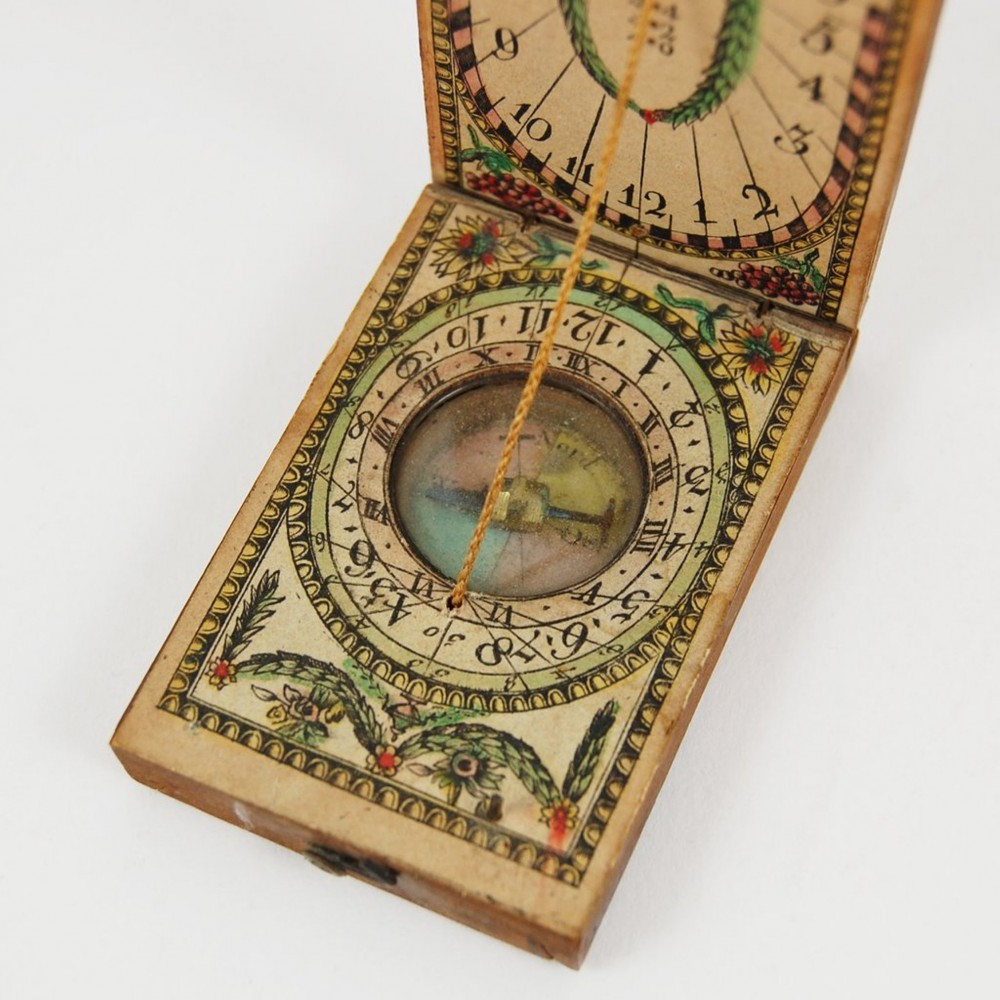
Reseasrch in 2013 at the medieval fortress of Deva. Transylvania, revealed a fragment of an ivory diptych sundial, the only one of its type found in the course of the archaeological excavation. Iconographic analogies prove that the find was without doubt part of a composite instrument: a closable box containing a compass, a retractable equatorial sundial and a calendar representing a portable 3-in-1 instrument that was ideal for journeys, allowing its user to measure the correct time. Ivory is made from the tusks and large or projecting teeth of animals such as elephant, walrus and several species of whale.The type of ivory was identified is based on analysis of the composition of the dentine and its specific growth structure. This particular material was used for manufacturing portable sundials in the town of Nuremberg. One feature of this fragment, and analogous pieces represented in images, is that none resembles the others, each piece is an original design. However, one common denominator is the method of working the material. The surfaces had been softened with a special preparation in order to prevent the ivory from cracking when hit with punches used to stamp decorative motifs. RTI (Reflection Transformation Imaging) imaging was used to assess which tools had been used to create holes: at that time, small holes were typically made using an ordinary bow drill, while larger holes might have required the use of a lathe. Another common denominator was the method of functioning of the sundials, using latitude and longitude. They were designed to operate within specific geographical coordinates, shown (through application of George Serle’s latitude scale for reverse engineering) to be approximately 51-52°, an axis that runs through the northern half of the European continent. Iconographic analogies, corroborated with archaeological data and the historical background of Deva fortress, lead to the conclusion that this artefact can be dated to the middle of the sixteenth century — 1539-1551 or 1557-1559 — representing the two periods Isabela Zápolya (daughter of the Polish King Sigismund I) and her entourage resided in the fortress. Historical findings indicate that this artefact belonged to a person from the Queen’s entourage, most likely a soldier.
Source: Ionuţ-Cosmin Codrea (2016). A Sixteenth Century Ivory Diptych Sundial Discovered in Deva Fortress. Terra Sebvs. Acta Mvsei Sabesiensis. 8: 240-251
Source web-site: https://www.cclbsebes.ro/docs/Sebus_8_2016/9_IC_Codrea.pdf
Number of views: 3169